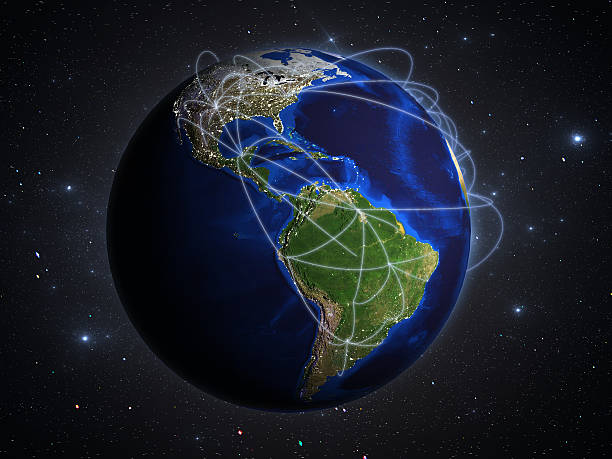For centuries, Mars has captivated the human imagination more than any other planet in our solar system. It glows faintly red in the night sky, inviting curiosity and speculation. Ancient civilizations saw it as the god of war; modern scientists see it as humanity’s next great frontier. The question is no longer whether we can reach Mars, but when we will. The journey to the Red Planet is not just a matter of rockets and engineering—it is a complex web of science, technology, biology, psychology, and political will. Despite massive progress in recent decades, landing humans on Mars remains one of the most ambitious undertakings in history. Understanding when it might happen requires a clear look at the prospects, challenges, and evolving timelines that define this interplanetary dream.
The Vision of a Martian Future
The idea of sending humans to Mars has existed since the dawn of the Space Age. The 1960s brought the first robotic missions and the Apollo moon landings, igniting global speculation about when we might take the next step outward. Scientists have long viewed Mars as the most promising destination for human exploration because it is the most Earth-like planet in the solar system. It has a day just 40 minutes longer than Earth’s, a thin atmosphere, polar ice caps, and evidence of ancient rivers and lakes.
Visionaries such as Wernher von Braun, Carl Sagan, and later Elon Musk have kept the dream alive. For them, Mars is not just a destination—it represents humanity’s destiny as a multi-planetary species. Colonizing Mars could ensure our survival in the face of existential threats such as asteroid impacts, climate collapse, or global war. For others, Mars offers scientific and philosophical meaning: understanding our cosmic origins and whether life exists beyond Earth.
This combination of existential purpose, technological challenge, and boundless curiosity continues to fuel the race toward Mars. But dreams alone cannot overcome the immense physical and logistical challenges of interplanetary travel.
Why Mars?
Among all the planets, Mars is the most accessible and potentially habitable. Venus, though closer to Earth, is a hellish world of crushing pressure and scorching temperatures. The gas giants are far too distant and lack solid surfaces. Mars, by contrast, offers terrain we can walk on, resources we can extract, and conditions that—while harsh—are survivable with advanced technology.
Mars’ proximity to Earth is also a crucial advantage. At its closest, it lies about 55 million kilometers away. This distance is vast but manageable with current propulsion systems, requiring a journey of six to nine months depending on the orbital alignment. Moreover, Mars’ geology and history make it a natural laboratory for studying planetary evolution and the possibility of life.
Robotic missions have revealed that Mars once had liquid water, a thicker atmosphere, and a magnetic field. These findings suggest that ancient Mars may have been habitable. Discovering microbial fossils—or even extant life—would revolutionize biology, confirming that life is not unique to Earth.
For scientists and engineers, Mars represents both a stepping stone and a proving ground for the future of space exploration. The lessons learned from Mars missions will guide humanity toward deeper ventures—perhaps to the moons of Jupiter and Saturn, and eventually beyond the solar system.
The Current State of Mars Exploration
To understand when humans might land on Mars, it helps to examine how far we have already come. Since the 1960s, dozens of robotic missions have explored Mars from orbit and on its surface. The United States, the Soviet Union, the European Space Agency, China, India, and the United Arab Emirates have all contributed to this growing body of knowledge.
NASA’s Mars program has achieved particular success. The Viking missions of the 1970s performed the first soil experiments searching for life. Later, orbiters like Mars Reconnaissance Orbiter and rovers such as Spirit, Opportunity, Curiosity, and Perseverance provided unparalleled data on Martian geology, atmosphere, and surface chemistry. These missions revealed water ice beneath the surface, seasonal methane emissions, and evidence of habitable environments in the past.
China’s Tianwen-1 mission marked another milestone, placing both an orbiter and the Zhurong rover on Mars in 2021. The European Space Agency’s ExoMars program aims to drill beneath the surface to search for organic molecules. These robotic forerunners have laid the foundation for human exploration by identifying landing sites, resource locations, and environmental hazards.
The next robotic phase includes sample-return missions. NASA and ESA plan to retrieve rock samples collected by Perseverance and bring them to Earth for detailed analysis in the 2030s. This mission is widely regarded as a critical precursor to human exploration, as it will reveal whether Mars’ soil poses biological risks and how it reacts to handling and transport.
The Role of SpaceX and Private Industry
While space agencies have long dominated interplanetary exploration, the rise of private spaceflight has transformed the equation. SpaceX, led by Elon Musk, has made human settlement on Mars its central mission. The company’s Starship spacecraft is designed as a fully reusable, heavy-lift vehicle capable of carrying over 100 metric tons to orbit—and potentially to Mars.
Starship’s development represents the most ambitious step toward a practical Mars transport system. Its reusability could dramatically lower launch costs, a key barrier to interplanetary missions. Musk has repeatedly stated his vision of establishing a self-sustaining Martian city within decades, beginning with cargo missions to deliver habitats, power systems, and life-support infrastructure.
Other private entities, such as Blue Origin and Lockheed Martin, are also developing technologies relevant to Mars exploration. Blue Origin’s long-term goal of “millions of people living and working in space” aligns philosophically with Mars colonization, while Lockheed’s designs for reusable Mars transport vehicles and habitats complement NASA’s Artemis and Mars initiatives.
The growing partnership between public agencies and private industry marks a significant shift. SpaceX, for instance, already collaborates with NASA through the Commercial Crew Program and the Artemis lunar missions. These partnerships could accelerate Mars readiness by combining government funding with private innovation.
The Physics of the Journey
Reaching Mars is not simply a matter of pointing a rocket and firing. The planets orbit the Sun at different speeds and distances, so missions must launch during optimal windows when Earth and Mars are properly aligned—known as Hohmann transfer opportunities. These occur roughly every 26 months, limiting launch flexibility.
The travel time depends on propulsion efficiency and trajectory. With current chemical rockets, the journey takes six to nine months. Advanced propulsion technologies, such as nuclear thermal or electric engines, could reduce that to around three months, but these systems are still experimental.
Once en route, spacecraft must navigate the hostile environment of interplanetary space. Cosmic radiation poses a major hazard, as there is no protective magnetosphere or atmosphere to shield travelers. Prolonged exposure increases cancer risks and can damage the central nervous system. Engineers are exploring radiation shielding methods, including water-based barriers, magnetic fields, and habitat design optimization.
Mars’ atmosphere adds another challenge. It is thick enough to generate aerodynamic heating during entry but too thin to slow down spacecraft efficiently with parachutes alone. Engineers must use combinations of heat shields, retro-propulsion, and supersonic parachutes to achieve safe landings. SpaceX’s Starship plans to use retro-propulsive landing—firing its engines to decelerate—similar to its Falcon rocket landings on Earth.
Surviving on the Martian Surface
Landing is only the beginning. Surviving on Mars requires addressing four critical needs: air, water, food, and shelter. The Martian atmosphere is 96 percent carbon dioxide and contains almost no oxygen. The average surface temperature is around minus 63 degrees Celsius, and radiation levels are about 50 times higher than on Earth’s surface.
Producing oxygen locally is therefore essential. NASA’s MOXIE experiment aboard the Perseverance rover successfully demonstrated in-situ resource utilization (ISRU) by converting carbon dioxide into breathable oxygen. Scaling up such systems will be vital for sustaining crews and fueling return vehicles.
Water can be extracted from ice deposits found at the poles and beneath certain mid-latitude regions. Melting and purifying this ice would provide not only drinking water but also hydrogen for fuel production. Closed-loop life support systems, similar to those used on the International Space Station, will recycle air and water to minimize resupply needs.
Food production poses a longer-term challenge. Transporting food from Earth is impractical for extended stays, so researchers are exploring hydroponic and aeroponic systems for growing plants in controlled habitats. Martian soil, while containing useful minerals, is contaminated with perchlorates—chemicals toxic to humans. Processing or isolating these compounds will be essential for safe agriculture.
Radiation protection will require robust shielding. Future habitats may be built underground, covered with regolith (Martian soil), or shielded with water tanks to reduce exposure. Some designs envision inflatable modules encased in local materials, combining flexibility with protection.
Psychological and Physiological Challenges
The journey to Mars will test not only machines but also human endurance. Astronauts will spend months confined in a small spacecraft, isolated from Earth and exposed to microgravity. Prolonged weightlessness leads to muscle atrophy, bone density loss, and cardiovascular deconditioning. Countermeasures such as exercise regimens and rotating habitats that simulate gravity are under investigation.
Equally serious are the psychological effects. Isolation, monotony, and communication delays—up to 22 minutes each way—could strain mental health and teamwork. Astronauts will have to operate largely autonomously, with delayed guidance from mission control. Training in conflict resolution, mindfulness, and social resilience will be critical.
NASA and partner organizations have conducted numerous simulations, including the HI-SEAS habitat in Hawaii and Russia’s Mars500 project, to study long-duration confinement. These experiments reveal that psychological adaptation may be one of the most unpredictable factors in Mars missions. Selecting crews with complementary personalities and resilience under stress is as important as technical skill.
Building the Infrastructure for Mars Missions
Before humans set foot on Mars, extensive infrastructure must be established. This includes launch systems, orbital transfer vehicles, surface habitats, and supply chains. NASA’s Artemis program, which aims to return humans to the Moon, is seen as a precursor to Mars exploration. The Moon will serve as a testing ground for life support systems, resource extraction, and surface operations.
Lunar orbiting stations like the Gateway will facilitate interplanetary staging, providing refueling and assembly points for Mars-bound spacecraft. Technologies such as nuclear power systems, autonomous construction, and advanced robotics will first be proven in lunar environments before deployment on Mars.
On Mars itself, establishing a permanent base will require logistics on an unprecedented scale. Power generation will likely rely on solar panels or compact nuclear reactors. Communications will depend on orbiting relay satellites. Habitats, vehicles, and tools must be designed for maintenance with minimal external support. The long-term vision involves building local industries using Martian materials—an approach known as in-situ manufacturing.
International Collaboration and Competition
No single nation or company can achieve a Mars landing alone. The scale, cost, and complexity demand global cooperation. NASA, ESA, Roscosmos, CNSA, JAXA, and private entities all play essential roles. International collaboration offers not only resource sharing but also political stability and scientific diversity.
However, space exploration has always been intertwined with competition. The original space race between the United States and the Soviet Union was driven by geopolitical rivalry, and a similar dynamic may shape future Mars missions. China has openly declared its intention to send humans to Mars by the 2030s. The United States has similar ambitions, with NASA targeting the late 2030s or early 2040s for a crewed mission.
This blend of collaboration and competition can accelerate progress. Historical precedent shows that national pride often drives funding and innovation. The challenge will be ensuring that Mars exploration remains a peaceful, cooperative endeavor rather than a new arena for conflict.
Technological Breakthroughs on the Horizon
Several emerging technologies could determine the feasibility and timing of human Mars missions. Nuclear thermal propulsion, for example, promises faster and more efficient interplanetary travel. It uses a nuclear reactor to heat hydrogen propellant, providing double the efficiency of chemical rockets. NASA and the U.S. Department of Defense are already developing prototypes for potential use in Mars missions.
Artificial intelligence and robotics will also be indispensable. Autonomous systems can construct habitats, maintain equipment, and perform reconnaissance before human arrival. AI-assisted navigation and decision-making will be essential for managing communication delays and emergencies.
Additive manufacturing—3D printing—will allow astronauts to produce tools, replacement parts, and even structural components from local materials. This dramatically reduces the need for resupply from Earth.
Finally, breakthroughs in life support and bioregenerative systems could make self-sustaining habitats possible. Closed ecological systems that recycle air, water, and nutrients are essential for long-term colonization. Research on Earth and aboard the ISS is already paving the way for these technologies.
Economic and Political Realities
Mars missions are not only scientific and technical challenges—they are economic and political ones. The cost of a single crewed mission is estimated to range between $100 billion and $500 billion, depending on scale and duration. Funding such an endeavor requires long-term political commitment that can withstand changes in administration and public opinion.
Historically, large-scale space projects succeed only when they align with broader national or international goals. The Apollo program, for instance, was justified by Cold War competition. Future Mars missions may depend on similar motivations—whether geopolitical influence, technological leadership, or the promise of economic spinoffs.
Public interest also plays a crucial role. Enthusiasm for space exploration waxes and wanes with global events. Maintaining momentum will require not only scientific progress but also storytelling—connecting Mars exploration to humanity’s shared aspirations.
Timelines: When Might Humans Actually Land on Mars?
Predicting an exact date for the first human landing on Mars is difficult. However, based on current progress and plans, several plausible timelines emerge. NASA’s official roadmap envisions sending humans to Mars orbit in the late 2030s, followed by a surface mission in the early 2040s. This schedule aligns with the completion of Artemis lunar missions and the development of deep-space transport systems.
SpaceX’s ambitions are more aggressive. Elon Musk has suggested that the first crewed Starship mission to Mars could occur as early as the mid-2030s, following multiple uncrewed cargo missions in the late 2020s. Whether this timeline is realistic remains uncertain, as Starship must still demonstrate orbital success, in-space refueling, and safe reentry from interplanetary speeds.
China has announced plans to land humans on Mars by 2035–2040, with a series of precursor missions already underway. If international collaboration materializes, a joint mission could occur within the same timeframe, combining resources and expertise from multiple spacefaring nations.
A conservative yet realistic estimate suggests that humans may set foot on Mars between 2038 and 2045. The determining factors will be funding stability, technological readiness, and global cooperation.
Ethical and Philosophical Considerations
Landing humans on Mars raises profound ethical questions. Should we terraform Mars or leave it in its natural state? If microbial life exists, do we have the right to alter or endanger it? Planetary protection policies seek to prevent biological contamination in both directions, but balancing exploration with preservation remains contentious.
There are also questions about governance. Who will control Mars settlements? What legal frameworks will regulate resource extraction, territorial claims, and human rights? The Outer Space Treaty prohibits national ownership of celestial bodies, but practical governance in a multi-national colony remains untested.
Beyond legality, there are moral considerations. Is it justifiable to invest hundreds of billions in space exploration while poverty and environmental crises persist on Earth? Advocates argue that Mars exploration drives innovation, inspires generations, and provides perspective on Earth’s fragility. Critics counter that priorities should remain grounded in immediate human needs.
The First Steps Toward a Martian Civilization
When humans finally land on Mars, it will not mark the end of a journey but the beginning of a new era. The first missions will likely last a few months, focused on establishing habitats, testing life-support systems, and gathering geological samples. Gradually, stays will extend to years, with crews rotating between Earth and Mars.
As infrastructure grows, permanent bases will emerge, supported by autonomous supply chains and resource utilization. Over decades, these could evolve into small colonies, expanding scientific research and eventually hosting civilian settlers. The long-term vision of a self-sustaining Martian city will depend on developing a local economy—perhaps based on research, tourism, or resource export.
For many, the prospect of living on another world is more than a scientific milestone—it is a symbol of hope, resilience, and human ingenuity. It demonstrates that humanity can transcend its boundaries, both physical and psychological, and embrace a destiny among the stars.
Conclusion
The question of when humans will land on Mars cannot be answered with a single date. It depends on countless variables—technological breakthroughs, funding priorities, political decisions, and human courage. Yet one thing is certain: the path to Mars is already underway. Each new mission, each innovation in propulsion or habitat design, brings us closer to that historic moment when a human footprint will press into the red dust of another world.
When it happens—whether in the 2030s, 2040s, or beyond—it will redefine our understanding of what is possible. Mars is not just a destination; it is a mirror of our collective ambition, a testament to humanity’s desire to explore, to endure, and to evolve. Reaching it will demand the best of our science, our cooperation, and our spirit. And when that first human stands beneath the pale pink sky of Mars, looking back toward the tiny blue dot of Earth, we will know that the dream of reaching the stars has truly begun.






